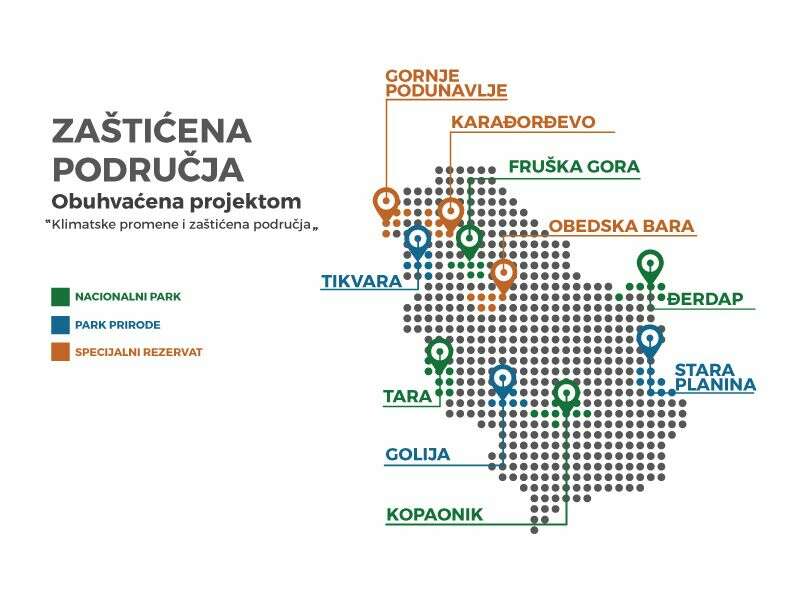This publication is prepared within the project “Climate Change and Protected Areas”, to point out basic measures for the prevention and mitigation of the effects of climate change on protected areas in Serbia.
Climate change is a major contributor to wildlife. This was also confirmed in the latest report by the International Panel on Climate Change (IPCC), which states that in each of the different scenarios of greenhouse gas emissions, a large number of terrestrial, freshwater and marine species are at increased risk of extinction due to climate change.
Serbia is located in a physico-geographical location which is significantly influenced by climate change, and in the future it is expected that the temperature will increase further with the increased number of natural disasters (droughts, floods, landslides, etc.).
Climate change has particularly negative impact on protected natural areas, which are also the focal points of biodiversity. In the territory of the Republic of Serbia, there are 461 protected areas, which cover 7.48% of the total territory.
Adapting to climate change, mitigating its effects, as well as monitoring the status and adaptation of protected area management plans are some of the measures to conserve biodiversity and improve the existing status of protected areas.
During the project period, a questionnaire was created on how the topic of climate change is integrated into the planning and programming documents for the management of protected areas. Based on the results of the questionnaire, which was forwarded to the managers of the 10 protected areas, an analysis of the integration of climate change mitigation and adaptation measures into the planning and programming documents was made.
The team of experts, in constant communication with the members of the project team, worked in the first phase on defining species and habitats vulnerable to climate change, and then on developing proposals for measures that could be used to mitigate and adapt to climate change in protected natural areas. You can download the publication HERE. There is only serbian language version available.
The Climate Change and Protected Areas project is designed to increase climate resilience to protected areas in Serbia, and is supported by the World Wide Fund for Nature (WWF).
Photo source: Belgrade Open School
The publication is prepared within the project “Climate Change and Protected Areas”, to point out basic measures for the prevention and mitigation of the effects of climate change on protected areas in Serbia.
Climate change is a major contributor to wildlife. This was also confirmed in the latest report by the International Panel on Climate Change (IPCC), which states that in each of the different scenarios of greenhouse gas emissions, a large number of terrestrial, freshwater and marine species are at increased risk of extinction due to climate change.
Serbia is located in a physico-geographical location which is significantly influenced by climate change, and in the future it is expected that the temperature will increase further with the increased number of natural disasters (droughts, floods, landslides, etc.).
Climate change has particularly negative impact on protected natural areas, which are also the focal points of biodiversity. In the territory of the Republic of Serbia, there are 461 protected areas, which cover 7.48% of the total territory.
Adapting to climate change, mitigating its effects, as well as monitoring the status and adaptation of protected area management plans are some of the measures to conserve biodiversity and improve the existing status of protected areas.
During the project period, a questionnaire was created on how the topic of climate change is integrated into the planning and programming documents for the management of protected areas. Based on the results of the questionnaire, which was forwarded to the managers of the 10 protected areas, an analysis of the integration of climate change mitigation and adaptation measures into the planning and programming documents was made.
The team of experts, in constant communication with the members of the project team, worked in the first phase on defining species and habitats vulnerable to climate change, and then on developing proposals for measures that could be used to mitigate and adapt to climate change in protected natural areas. You can download the publication HERE.
The Climate Change and Protected Areas project is designed to increase climate resilience to protected areas in Serbia, and is supported by the World Wide Fund for Nature (WWF).

